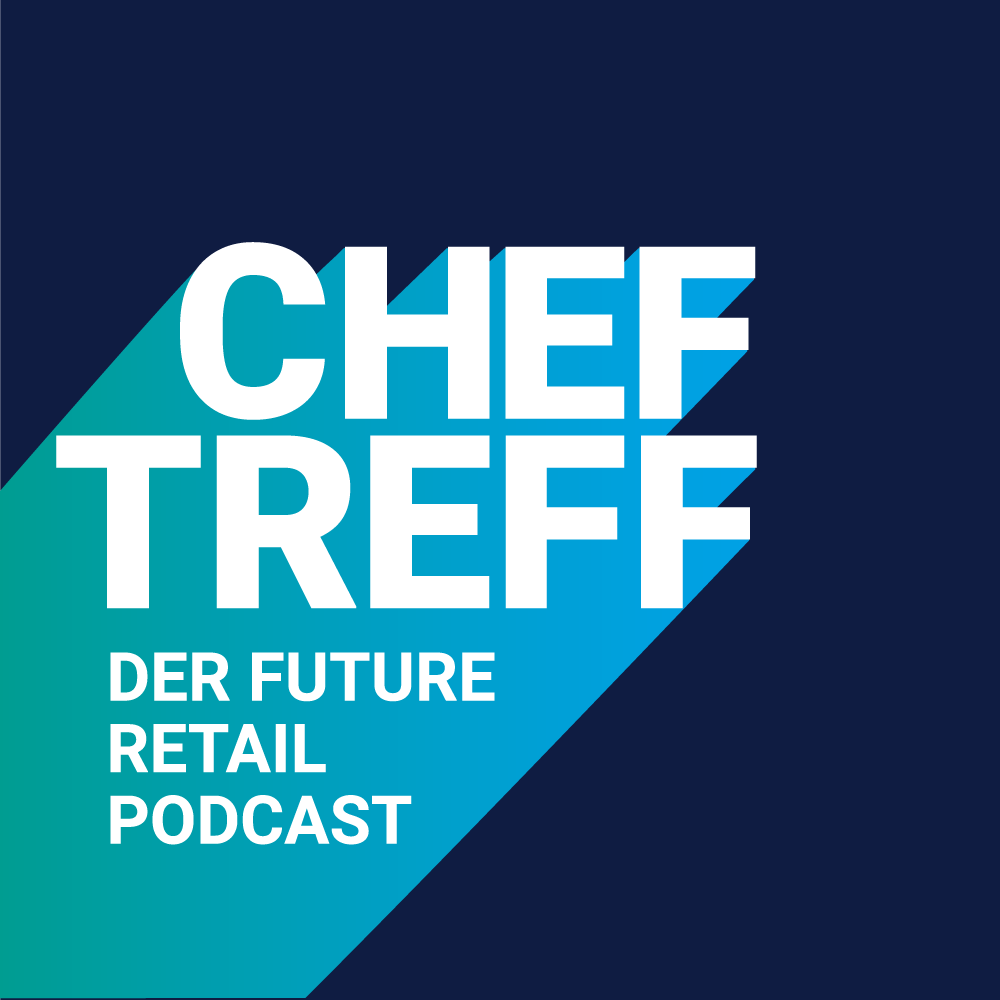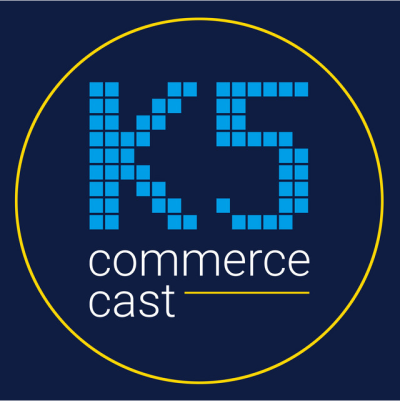

We’re finally here. After months of preparation and planning, I’m more than excited that our K5X-PEDITION China Retail Innovation has officially started. In the next week, we’ll be immersing ourselves in the culture and will learn first-hand, how Future Retail is lived in China. I’ll be covering our journey as well as my thoughts and learnings in this “diary”. Follow along as we take a deep dive into retail innovation in China.
Day 1 - An introduction to Chinese Culture
Day 2 - Deep Dive into the Rise of China
Day 5 – The four little dragons that go overseas
Day 6 – AI in China and the Coffee Wars
Preparing for the expedition, Ed Sander and Jessica Sun showed us how essential it is to reflect on how trust functions in Chinese society. China is often considered a low-trust society—trust in government, authorities, and institutions can be limited. But this has given rise to a powerful alternative: personal networks of trust, or 关系guān xì.

Guān xì represents the deeply woven web of connections that we build through mutual support and reciprocity. It's about giving before you expect to receive, creating bonds that are strengthened by the exchange of favors, loyalty, and respect.
In this context, events like the K5X-PEDITION are more than just professional meet-ups. They are opportunities to weave a new web of connections, build trust, and create lasting partnerships. We are coming together to not just network but to build meaningful relationships.
As leaders from Germany and the Netherlands, we’re immersing ourselves in the Chinese way of building trust through Guān xì. We have gathered for our first lunches and dinners, shared stories, and truly gotten to know each other beyond just professional titles. It’s fascinating to see how the level of trust rises as we dive into meaningful exchanges, especially because many of us were only acquaintances at first.
I find it outstanding how Chinese culture nurtures trust. Instead of greeting each other with "How are you?" the common phrase is, 你吃了吗? nǐ chī le ma?: "Have you eaten?" or "What have you eaten today?" This highlights the cultural focus on building connections through shared meals, whether with relatives, friends, or your trusted network. Sitting together at the table, eating, and building trust—it’s how personal networks are strengthened, even in a society where institutional trust may be lower.

For us, this experience offers a remarkable perspective on how trust is built from the ground up, through personal interactions, care, and reciprocity. Let’s continue to grow these networks and deepen our understanding of one another.
Looking forward to more shared meals, moments and conversations.




It’s day two of the K5X-PEDITION to China. Today, Ed Sander kicked off with what felt-like a 200-slide presentation on the rise of China as an economic superpower. And one of the main reasons we organized this K5 tour was to get an unbiased view on three things:
1. China as a country
2. China as a culture
3. China as an economy
And if you look at China more closely, there are a lot of conflicting ideas about what this country and its people are all about.
You will soon find yourself holding opposing or even conflicting ideas about China in your head and trying to balance them. China itself describes its economy as socialism with Chinese characteristics. And this is no wonder, because after the so-called century of humiliation between the mid-1900s and mid-20th century, the Chinese came up with the idea that – as their current leader Xi Jinping put it – they want to fulfill their own Chinese Dream until the year 2049. Exactly 100 years after founding the People's Republic of China in 1949.
It is impressive to look at what China has achieved over the last seven decades. In my opinion, China is on a very good way to actually fulfill their own Chinese Dream and to become one of the world's leading economic superpowers – and maybe they’re already there yet. Why am I so confident? Here are some facts we have gathered in the masterclass:
But let's face the facts from the other side. China also has a lot of domestic challenges, which starts with a high Gini index saying that the inequality is still very high in comparison to other developed countries.

In short, richer people get richer, which means that also many people are on the low end of the receiving buying power when it comes to, for instance, platform workers, people who work as riders or drivers in the delivery economy.
Another challenge is the gender imbalance between male and female in the population, which is one of the effects of the one child policy. Another effect is that in Chinese culture, the male was always valued higher than the female child, which has changed now over time. But of course, this cannot be corrected because this mistake has been made.
The morning was packed with theoretical input on the rise of China. In the afternoon, we were able to experience one of the reasons for that rise in the retail scene with a visit to the JD.com headquarters and one of their warehouses.
Visiting JD.com this afternoon, two concepts stung and stuck with me
1. Their vision of "Being the most trusted company in the world"
2. Their ambition to really think BIG!
The first one stands out because as I have laid out yesterday, China is in general a low trust society. So hearing this value based mission from the 150 billion Dollar revenue juggernaut caught me by surprise. So we discussed this slogan and circled around the business model which is – compared to younger and faster chinese ecom players – old-fashioned and very traditional.
Why traditional? JD.com comes mainly from physical operations, owning the stock in their warehouses, providing a full logistics service to customers and other retailers with their own last mile delivery service. A business model we call “asset heavy”. But exactly there lies a lot of potential for building and maintaining trust. You own and control the full value chain. And moreover you control the quality of the inventory. Which is a rising concern among consumers buying from marketplaces and platforms – and regulators from the EU looking at Chinese platforms.
Their ambition to think BIG is mind boggling. It is just impressive to hear and watch the ambition and the velocity with which a company like JD.com scales and tackles the opportunity lying ahead. On the one hand, there are the hard numbers and goals they set themselves – numbers that will make your head turn in many many ways.
35711 is a number - or rather a row of numbers - that will continue to stay with me. It signifies JD.com’s vision for the next 20 years – set in 2023. Keep in mind, this is one company.
3 - JD.com wants to establish three enterprises with over RMB 1 trillion in revenue and RMB 70 billion in net profits
5 - JD.com aims to have 5 JD enterprises rank on the Fortune Global 500 list
7 - JD.com is bringing seven publicly listed companies that started from zero to a market value of RMB 100 Billion
1 - JD.com aims to contribute RMB 100 Billion in taxes
1 - JD.com aims to create over 1 million jobs
On the other hand, we were able to experience the sheer vastness of that company at their headquarters that boasts its own subway station, numerous shops and even instant delivery options. They are continuing to build the headquarters with kindergartens, helicopter pad, and more. Looking at the model of the JD.com campus made the company's ambition even more tangible. Many things are still in a very early stage. But beware ...The company is 20+ years old and still on the rise.


In the era of EVERYTHING NOW - Speed and Trust become the main driver for Grocery Retail.
Day three of our K5X-PEDITION was all about instant retail – a huge topic in China that we can learn tons from. Even at our K5 Conference this year one of the best lineups for E-Food and Online Grocery got only mediocre attention. Whereas here in China the shares of online grocery have skyrocketed and e-food is a central driver in Chinese ecommerce:
Hema (Freshippo) - a Alibaba Group company - has close to 70% online share. And we are not talking about Click & Collect mockery but pure delivered goods! The “freshness” in the name is part of the strategic positioning – you can even order live seafood from the store next door and have it delivered.
Walmart’s Sam’s Club has also found a winning model with 50% online share through memberships and heavy discounts on bulk buying. So not only the Chinese players are working their way up the ladder.
In China, it all started back in 2015 based on a couple of structural advantages:
+ a densely populated urban structure
+ a young workforce who doesn’t want to spend their little spare time on grocery shopping
+ a willingness to pay for extra services
+ an enormous appetite for very fresh groceries
+ and of course very favorable labor and delivery costs
Chinese companies wouldn’t be Chinese if they would not seize business opportunities like that. Since then nearly all relevant players have entered the market (Alibaba, Meituan, Pinduoduo, JD.com, etc.) with very different models (see chart below). For a real deep dive into this topic I warmly suggest you check out Ed Sanders' work on techbuzzchina.com.

But what struck me the most is the fact that even with so many levers working in their favor, it is still very difficult for companies to reach sustainable profitability here in China. And since the government came down hard on nearly all the internet juggernauts, access to fresh capital has dried up.
So why bother? Why juggle with an asset heavy business model, managing spillage and cold chain delivery as well as very high marketing costs for customer acquisition?
Well, to answer that you’ll have to zoom out and understand the overall competitive landscape in China. Companies like Alibaba, JD.com, Pinduoduo & Co are competing on a group level for customers, eyeballs and share of wallet.
The online grocery market is one of the stickiest ways to suck customers into their encompassing ecosystem (see chart below).

After our deep dive into instant delivery and a visit to a Wet Market with the freshest of seafood, we boarded the bullet train to our next destination: Hangzhou. Here we’ll learn more about another immensely trending topic: Live Commerce.

Day 4 of our expedition again started with lots of food for thought from Ed Sander. We got a general introduction to e-commerce in China. The presentation was so packed with insights, that I’ll be sharing those in a separate blogpost down the road. So stay tuned!
On to the second topic of the day: live commerce.
Live commerce in China has exploded in recent years, blending entertainment with instant shopping opportunities. With an audience of 600 million people watching live shopping streams, it’s become an essential pillar of Chinese e-commerce. On day four of our K5X-PEDITION, it was time to take a closer look at how this phenomenon evolved, its success factors, and what Western brands can learn from it.
Phase 1: The Early Days of YY.com (2010)
Live streaming in China began with platforms like YY.com, which saw the rise of influencers, or “Wang Hong” as they were called then. These early streams featured gamification, where viewers sent virtual gifts (purchased with real money) to the hosts. This phase had a predominantly male audience (70:30 male-to-female ratio), pointing to a notable gender disparity in early adoption.
Phase 2: The Age of KOLs and MCNs
The next phase saw the rise of KOLs – Key Opinion Leaders – akin to what the West knows as influencers. Trust became a key factor in their appeal. Multi-Channel Networks (MCNs) emerged to support these influencers by offering operational and technical expertise, enabling them to scale their reach.
Phase 3: The Birth of Live Commerce
Alibaba’s pivotal move – integrating live streaming into major shopping festivals like Singles Day (11.11) – marked the onset of live commerce as we know it. Recognizing that "content wins the eyeball game," Alibaba leveraged live streaming to enhance user engagement and trigger impulse buying. Though this came with a downside: higher return rates, skyrocketing from 4% to 30%. Despite this, live commerce continued to flourish, driven by a mix of entertainment, FOMO (fear of missing out), and interactive shopping experiences.

Several factors have contributed to the meteoric rise of live commerce in China:

Trust – like for so many other business models – is the backbone of this ecosystem. Most live commerce shoppers – 74% of them, earning under 5,000 RMB (around 700 EUR) – are price-sensitive. They tune in for THE deal, often coined as “The Li Jiaqi Price,” referring to China’s top live commerce influencer who frequently offers discounts of up to 40%. This trust-based economy is a key difference between Chinese and Western markets. Incorporating storytelling, such as mini-dramas and 3-minute stories, has also emerged as a way to keep viewers engaged, blending entertainment with commerce.
As trust continues to be pivotal, a shift is underway—from KOLs to KOCs (Key Opinion Consumers). KOCs are regular consumers whose product opinions and experiences hold sway in their peer circles. This shift reflects a growing desire for authenticity, as consumers become more discerning.
A new trend is emerging as well: AI-generated hosts and virtual influencers are expected to make up 1% of all live commerce hosts. In a bold regulatory move, Chinese law mandates that platforms clearly indicate when AI hosts are being used, ensuring transparency. On the flip side, Tencent has already banned digital influencers, underscoring the complex balance between tech innovation and regulation.
While live commerce is still in its infancy in Western markets, there are several takeaways from China's success:
1. Build Trust: In China, live commerce is about more than just selling products. It’s about the relationship between the host and the audience. Western brands need to cultivate similar levels of trust, ensuring that influencers and hosts are seen as credible sources.
2. FOMO and Exclusivity: Limited-time offers and exclusive deals drive the impulse to buy. Incorporating these tactics can encourage faster decision-making in Western audiences.
3. Embrace Entertainment: Live commerce in China often blends shopping with entertainment. Western brands should experiment with storytelling, gamification, and creative content to create more engaging experiences.
4. Seamless Shopping Experience: The convenience of buying directly from the live stream without friction is key. Western e-commerce platforms should aim for this level of ease to keep consumers engaged and ready to convert.
China’s live commerce ecosystem has become a global case study on how entertainment and e-commerce can be seamlessly integrated to drive engagement and sales. As Western brands explore this space, they’ll need to adapt these lessons to local markets while retaining the core principle of trust-driven commerce.
Western companies can tap into the enormous potential of live commerce by staying ahead of these trends, positioning themselves for success in this new retail landscape.
After another morning packed with insights from Ed Sander, it was time for us to travel to the countryside and visit a tea farm. Not a setting one would expect to see a live streamer in. But Wen Juan is successfully leveraging live commerce to sell her tea.
Before 2008, she had a tea shop in a nearby village and one day uploaded photos of her tea to Taobao. It sold quickly and when she had her child in 2009, she didn’t go to the shop anymore but sold her tea via Taobao. Ten years later, she started trying out live streaming and since October 2022 she live streams every day, selling her tea on Taobao, Alibaba’s platform for live streaming and shopping.
We were able to witness one of her live streams first-hand but not only that. Karo Junker de Neui even starred as a special guest in the stream. Being able to witness live commerce from the streaming side and even joining live was a really interesting experience, especially seeing all the live reactions and questions from viewers just rolling in.
Live streaming is also super accessible: Wen Juan only uses two phones - one to film and one to monitor the comments and questions coming in, that she then answers directly in her stream.
Tomorrow, we’ll first learn more about Pinduoduo, in the afternoon we’ll be visiting another live shopping and video pinnacle: Joy Media - the fastest growing TikTok agency, managing influencers in different regions of the world.




On Day five of our K5X-PEDITION, we first again started off with two information-stuffed lectures by Ed Sander. First, about Pinduoduo, second we took a deep dive into Cross-Border Commerce from China into western markets.
Long before the current e-commerce boom, Chinese manufacturers had already found a way into Western markets. While it may seem like a recent trend, this quiet infiltration has been happening for years. Amazon has very early opened up their marketplace for retailers from China. Factories and merchants have very early started selling directly to Western consumers, bypassing traditional intermediaries.


This move of selling directly to consumers now feels like we are ultimately responsible for a problem we are now facing within our economies: It started off with Amazon and Walmart, now platforms like Temu and SHEIN are selling directly to western consumers.
One standout platform discussed is Pinduoduo (PDD), the Chinese e-commerce giant behind Temu. The platform emphasizes fun, discovery, and community-driven shopping over conventional search-based purchasing. In fact, only 45% of products are found via keyword search, while the other 55% are discovered through browsing and recommendations. PDD’s strong recommendation engine has become key to its success, resembling a running sushi belt rather than a menu card approach, offering inspiration rather than straightforward options.
But PDD’s (evil) genius lies not just in user experience. It has also somewhat evolved into a bank. With negative working capital, PDD delays paying manufacturers for 3-4 weeks, effectively using the cash flow for investments and subsidies. A massive 10 billion yuan subsidy program has been implemented to attract top-tier consumers with subsidized prices, further reinforcing its power in the market.
PDD’s model sacrifices short-term profitability for long-term dominance, as evidenced by its meteoric rise. In Q3 2019 alone, they added 53 Million new users to the platform. Their growth trajectory is nothing further than impressive (putting the evilness of some of their practices aside): From 2 million iPhones sold in 2019 to 30% of its sales now being branded goods.
Cross-border e-commerce has exploded. It all started in China with Amazon opening up its backend to Chinese sellers in 2015. Today, more GMV (gross merchandise value) comes from Chinese sellers on Amazon than on AliExpress, marking a major shift in global commerce.

Chinese companies like Alibaba, PDD (Temu), JD.com and Bytedance (TikTok Shop) – the four little dragons – have taken this global opportunity and run with it, expanding their reach across continents. Their success is not just based on low prices, but a highly strategic, data-driven understanding of consumer behavior.
The question now is: how will Western markets adapt to this shift? As Chinese companies continue to expand their reach, the implications for global trade, consumer behavior, and market dynamics are profound. What once seemed like a distant threat has now become a reality, and we must respond accordingly.
The second part of the day was all about live commerce again. We went on to have a look at Joy Media in Hanghzou.
Joy Media is one of the leading agencies for live streaming and in China focusses on platforms like TaoBao (Alibaba) and Douyin (TikTok). They have 110.000 streamers under contract and not only manage those streamers but offer them training and expertise as well as studios and equipment to enable their live streams. Joy Media not only profits from commissions and the data they can gather from their streamers’ audiences, but also offers a B2B-platform for advertisers to plan and manage performance campaigns - including a payment system. It’s a real content powerhouse.
Their streamers, Key Opinion Leaders (KOLs), promote products through live streams. These influencers, often akin to popstars, have amassed huge followings, with some achieving annual revenues as high as 100 million yuan. Brands “rent” their services via Joy Media, capitalizing on their wide reach and the trust they've built with audiences.
Their followers are deeply loyal, often idolizing them to the point of sending gifts (money) during live streams simply as a show of support. Brands pay KOLs to promote and sell products during these live sessions, leading to staggering sales figures for many - like the immensely popular Guangdong Couple.
Unlike KOLs, who operate on a top-down model, KOCs represent a more grassroots approach to live shopping. These are regular people who have garnered trust in their small social circles. Their influence is based on authenticity and relatability, rather than celebrity status.
KOCs reflect a shift towards a peer-to-peer model, where everyday consumers can start their own live streams, attract followers, and sell products based on the trust they've built with their audience. This new model challenges the dominance of KOLs and suggests that the future of live commerce might be more democratized, with influence coming from everyday people rather than major celebrities.
The question now is whether the traditional top-down KOL model will remain dominant, or if the rise of KOCs will change the live commerce landscape? In this peer-to-peer system, the power lies in the hands of ordinary consumers who build trust within their smaller networks. While KOLs can drive massive sales due to their fame, KOCs offer a more relatable and perhaps more sustainable form of influence.
The ongoing evolution of live shopping leaves me asking: Will the future be shaped by celebrity influencers, or will the power shift to everyday consumers? Only time will tell, but one thing is certain: live shopping is here to stay.



Day 6 opened with another masterclass - this time AI-expert Stephane Monsallier took us on an informative journey on AI in China. Especially the fact that Artificial Intelligence is heavily regulated in China caught my attention.
The Chinese government has started regulating the use of AI already in 2017 and continues to do so heavily. Compared to Western countries, those regulations are mind blowing. China's regulatory efforts aim to address societal issues like data privacy, transparency, and consumer protection. The "Provisions on the Management of Algorithmic Recommendations" introduced in 2022 require companies to disclose algorithmic logic, prevent monopolistic behaviors, and prohibit harmful content promotion.
China has also been a frontrunner in creating regulations to manage deepfake technologies. Starting as early as 2020, China introduced measures that require platforms to label synthetic media and prohibit deepfake use in misleading ways, such as spreading fake news. While Europe is still consulting with experts and has yet to implement concrete laws, China has been expanding its regulatory framework with provisions for deep synthesis technologies that focus on user identification, real-time monitoring, and content removal. This could place China ahead in preventing potential abuses of AI-generated content, while Europe is still playing catch-up.
If you’d like to read more about both of these topics, I warmly suggest that you read Ed Sanders' work at https://www.chinatalk.nl/.
Each LLM has to be approved by the Chinese government in order to be deployed, which takes about six months. Quite a long time period looking at the immensely fast update cycles with most LLMs we currently see. But still, the Chinese government employs people able to actually evaluate LLMs, something that is pretty unheard of looking at most Western governments.
The afternoon was all about a topic I wouldn’t necessarily have had on my map when thinking about China: coffee.
Personally, I would have never put any money on the Chinese becoming obsessed with coffee. Well another one where I was wrong or where I misperceived the Chinese consumer…
Coffee culture in China has really taken off in recent years. The key player leading this charge is Luckin Coffee, founded in 2017. As a direct competitor to Starbucks, Luckin has successfully disrupted the market with an aggressive pricing strategy and a fresh approach.
The Luckin app now boasts 70 million active users per month!
Luckin's IPO in 2019 raised €560 million, but soon after, a scandal erupted. The company was caught inflating its sales numbers, even counting value coupons as revenue.
The stock price plummeted, and a new management team was brought in. Despite the setback, Luckin bounced back, expanding aggressively—especially into smaller cities. Today, they have 20,000 stores across China.
Meanwhile, the scandal’s former CEO launched a new coffee chain, Cotty Coffee, using his existing influence to rapidly scale the brand. In just one year, Cotty opened 6,000 stores!
The competition between these coffee giants has driven prices down across the board. Interestingly, Luckin, Cotty, and Starbucks (with its 7,000 stores) account for just 30% of the total coffee shop market in China.
The battle of the coffee titans continues to reshape China’s booming coffee scene. With so much competition and constant innovation, it’s an exciting time for coffee lovers in China.
But if you want to zoom out a bit, the Chinese coffee wars teach you one or two lessons on a grander scale:










